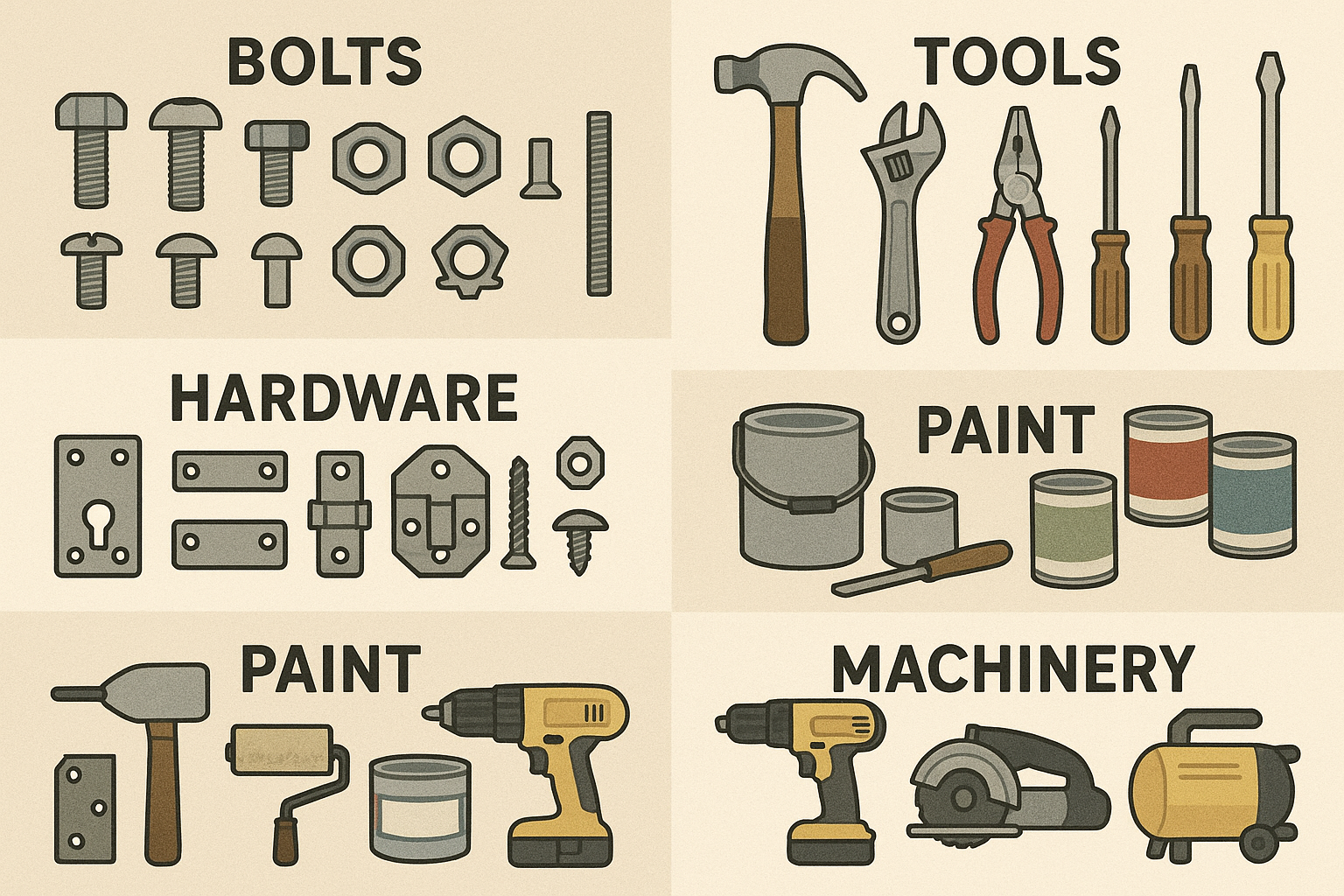When you’re setting up an ERP - or any software to manage products - how you organize your products into categories plays a bigger role than most people expect. It might seem like a basic setup task, but if you don’t do it thoughtfully, you’ll end up with a system that’s hard to use and even harder to maintain.
In many organizations, product categories are only created from an accounting perspective - just enough to run reports or assign costs. But for everyday users in sales, purchasing, or operations, these categories often don’t make much sense. That disconnect leads to problems that pile up over time.
Some common problems when categories aren’t planned well:
Duplicate Categories
This happens when teams can’t find the right category, so they create a new one that sounds right to them. For example, one team might create “Bolts” while another uses “Fasteners”. Technically, they may be referring to the same items, but now they’re split — and that usually leads to duplicated products, inconsistent naming, and unreliable inventory data.
Categories That Are Hard to Navigate
If the names used for categories don’t match how people think or speak in day-to-day work, they become hard to search. Someone might look for “Cleaning Supplies” but find nothing - because the category is actually called “Janitorial Consumables”. Unless everyone knows the exact terminology used when the category was created, they’re stuck digging or asking around.
Categories That Are Too Generic
A catch-all category like “Miscellaneous” or “General Use” might seem helpful when you’re not sure where to put something, but over time, it becomes a dumping ground. These vague categories make it harder to filter or report on products meaningfully, and they don’t help new team members understand how items are grouped.

How to Plan Categories That Actually Work
The good news is: you don’t need a perfect structure from day one — but you do need a plan. A good approach starts with input from the teams who actually use and search for products. That doesn’t mean hours of meetings — it can be as simple as drafting an initial structure and getting quick feedback before you move forward.
Try to answer questions like:
- Who needs to search for products?
- What kind of filters do they use today?
- What decisions or tasks depend on being able to find the right item quickly?
You’ll end up with a clearer idea of what categories need to exist, and what language makes sense for your organization.
Create a Structured and Predictable Pattern
Instead of building categories on the fly, define a structure with clear levels — and try to apply it consistently. This helps with both browsing and searching, and makes the system easier to scale as you add more products.
Here’s one example of a category structure with four levels:
- Function or Application – e.g., Packaging, Safety Equipment, Raw Materials
- Material or Composition – e.g., Cardboard, Stainless Steel, Polymer
- Form or Configuration – e.g., Roll, Sheet, Cylinder, Liquid
- Specific Type or Variant – e.g., 4x6 shipping labels, 3mm steel rod, 1L bottle
This kind of structure helps you group similar items, filter by shared attributes, and maintain consistency when adding new products. Of course, the right structure depends on your business. A manufacturing company will need a different logic than a distribution or retail business. The key is to make sure that the categories reflect how people actually search and use items — not just how they’re stored in the warehouse or listed in accounting.
At Nengatu, we provide a set of starting categories that you can use as a base - and tailor to your needs. They contain built-in logic that adapts to the type of product you’re working with. That means the system behaves differently for raw materials versus hardware, or for single parts versus assemblies - helping you work faster and with fewer errors.
A clear, well-planned category structure reduces mistakes, speeds up onboarding, and makes your ERP easier for everyone to use. It’s a small investment that pays off every day.